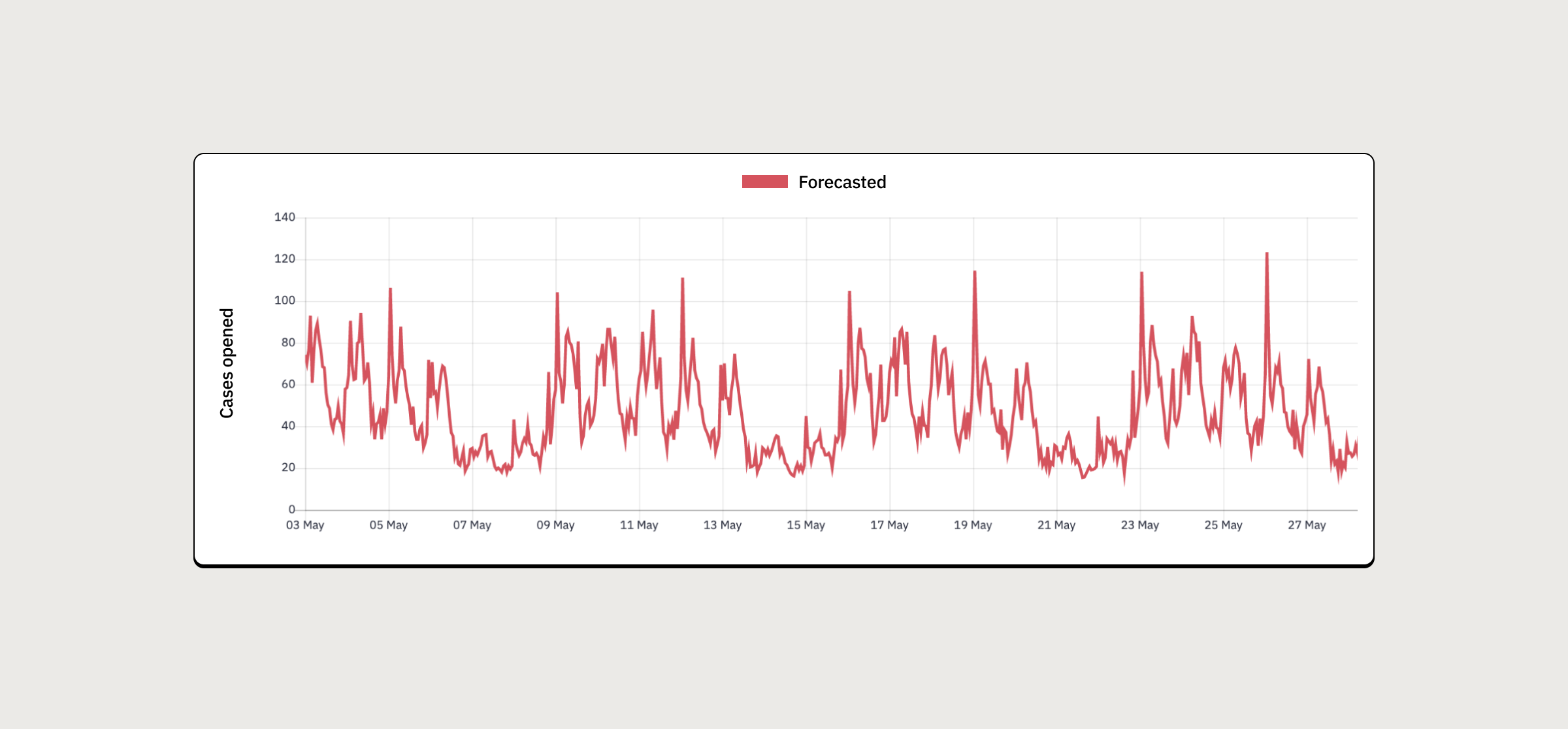The world of workforce management may not be the most glamorous, but one thing is certain: choosing the right forecast model can make or break the effectiveness of a support operation.
An accurate forecast model is the linchpin of efficient workforce management. It enables you to make informed decisions about staffing, scheduling, and resource allocation, ensuring your support team consistently delivers top-notch service.
Choosing your forecast model wisely will save you time and money, and prevent plenty of headaches for future you.
Introducing forecast management: your secret weapon to forecasting success
To help you make the best decision, we're excited to announce our new forecast management tool. This cutting-edge tool allows you to compare the accuracy of multiple forecast models at once, making it easier than ever to choose the ideal model for your specific channel, queue, or time interval.
Key features of our forecast management tool:
- Multi-model comparison table: Evaluate the performance of seasonal, N-week, N-week with momentum, and any custom forecasting models simultaneously to pinpoint the perfect model for any channel or queue.
- Accuracy guidance: Assembled will flag the model with the lowest mean absolute error, helping you narrow in on your most accurate model automatically. Learn more about calculations here.
- Visual reporting: Our tool provides intuitive visual representations of forecast accuracy for all selected models, over any date range and in your chosen time interval, making it a breeze to understand and share results with your team.
- Continuous improvement: As more data is collected, overall forecast accuracy continues to improve over time, for better-informed decision-making.
We've developed our forecast management tool with a clear mission in mind: to empower support teams in making strategic, data-driven decisions. By enabling you to evaluate and compare the accuracy of multiple forecast models, our tool helps you find the perfect fit for your business's unique needs.
Choose your fighter: a quick comparison
Forecasting models may share the common goal of predicting future demand, but their methods and time frames differ.
- Time frame: Seasonal forecasting considers data from an entire year (or more) to identify patterns, while N-week models focus on shorter periods (N being the number of weeks).
- Data scope: Seasonal forecasting analyzes historical data from multiple years to recognize recurring patterns, while N-week models use data from the most recent weeks. N-week with momentum models factor in both recent data and the rate of change, adding a layer of sophistication.
- Flexibility: Seasonal forecasting offers a comprehensive understanding of support demand fluctuations, particularly for industries with significant seasonal changes. N-week and N-week with momentum models will not capture seasonal variations as effectively, but are well-suited to adapt to recent trends and periods of rapid growth.
Below you’ll find an explanation of the different forecast models our forecast management tool allows you to compare.
Seasonal forecasting: when timing is everything
Embracing the seasonal forecast model brings a notable advantage: it uncovers recurring patterns and trends, helping support teams to fine-tune staffing and resources, ensuring customers remain happy even during the busiest of times and seasonal swings.
- Holiday seasons: Seasonal forecasting helps support teams anticipate and prepare for the holiday rush, arming them with the resources required to provide exceptional support.
- Product launches: Stay ahead of the curve by predicting surges in customer inquiries linked to new product launches. Seasonal forecasting allows you to allocate resources effectively and keep your team in fighting shape.
- Seasonal trends: For industries with marked seasonal fluctuations, such as travel and tourism, seasonal forecasting is a godsend. Support teams can adjust staffing levels accordingly, optimizing efficiency.
- Promotional campaigns: Prepare for promotional campaigns using seasonal forecasting, ensuring your support team is equipped to handle increased customer interactions.
- Strategic planning: Seasonal forecasting doubles as a valuable tool for long-term planning, enabling informed decisions on staffing levels, training, and resource allocation throughout the year.

N-week: when steady growth is the goal
Other common forecast models include N-week and N-week with momentum, the dynamic duo of forecasting. The N-week model, a classic in its own right, focuses on a predetermined number of weeks (N) and uses the latest data within that period to work its predictive magic. This model is a reliable choice for organizations with steady demand patterns and minimal seasonal mood swings.
N-week with momentum: when embracing ever-changing demand
The N-week with momentum model, on the other hand, adds a dash of flair to its N-week sibling. It not only considers the most recent data within the specified number of weeks but also takes into account the rate of change or "momentum" within that data. With its ability to adapt to trends and fluctuations like a chameleon, the N-week with momentum model is a more versatile option for organizations experiencing rapid change or skyrocketing growth.
When it comes to forecasting, you’ve got options
Ultimately, the right forecast model contributes to a more efficient and effective workforce management strategy. This, in turn, paves the way for exceptional customer support, making your team the true heroes they are.
Schedule a demo with our team to see forecast management in action.













